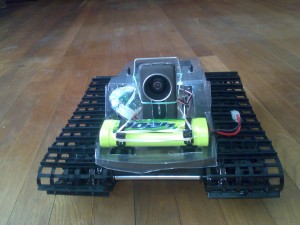Last Saturday, January 19th, 2008 at 12:00 PM, my final class (Topology and Manifolds — we spent the day studying homologies) ended and I officially was finished the requirements for my ALB (Bachelor of Liberal Arts with a concentration in Mathematics, Dean’s List, Cum Laude, a natural sciences Field of Study and a professional citation in Legal Studies) at the Harvard Extension School. I should get grades soon, and I expect my overall GPA (somewhere in the 3.7 – 3.8 range, where generally the top student in the class of ~180 will have a 3.8x) to put me in at least the top 5 in class ranking.
Overall I feel that I received the best undergraduate education possible. It was a great honor to study and then be a TA under Tom Hayes and run the Physics 123 lab — I think it’s entirely possible that Tom is the best introductory circuit design teacher in the world, and I know I am in great company. It was also a great honor to study cyberlaw at the Berkman center of Harvard law — as an undergraduate, I was able to take more IP, patent, copyright and digital law classes than are available at most law schools, including Larry Lessig’s former class “The Technology and Politics of Control”. I also learned Spanish with Professora Zetterstrand, studied the history of Boston under Robert Allison, and of course studied number theory, probability, topology, calculus, linear algebra, group theory, graph theory, etc. under professors Martinez, Boller, Winters, Bamberg, Towne. Astronomy at the Harvard Smithsonian Center for Astrophysics, Physics in the science center… comparative religious ethics and modern/contemporary American fiction in Harvard Hall. Museum studies with Mary Malloy (and the future directors of a couple dozen museums in the museum studies program), game theory with Neugeboren (who himself studied under Schelling, whose son Robert is also a close personal friend), psychology under Fersch, and the history of electronic music with Marshall all were brilliant courses also. So many of these professors were the best at what they do — leaders in their fields, the ones who wrote the books. And even though this was a “night school” program, Harvard refused to lower the bar and never failed to challenge me; many of the professors talked about how the curriculum in the college vs. night school was exactly the same, and in a number of cases the student projects and work in the night school exceeded that produced by the day students.
It’s been 6 long hard years of full-time work and full-time school and full-time family obligations and not much sleep. I’ve written countless essays, research papers, reading responses, and critiques. I’ve done hundreds of math and physics problem sets, quizzes, exams and projects. I’ve had to collaborate on group projects, explore the many Harvard libraries doing research, joined fellow students for late-night study sessions and eaten pretty much everything they sell in the Science Center cafeteria. I’ve become one of the world’s foremost experts at finding a parking spot in Harvard Square, and eaten many a late-night meal at the Red House after class. My sleep has suffered, my health has suffered, my job has suffered, and I have suffered. It is the hardest thing I have ever done, it may be the hardest thing I will ever do. Now it is done.






